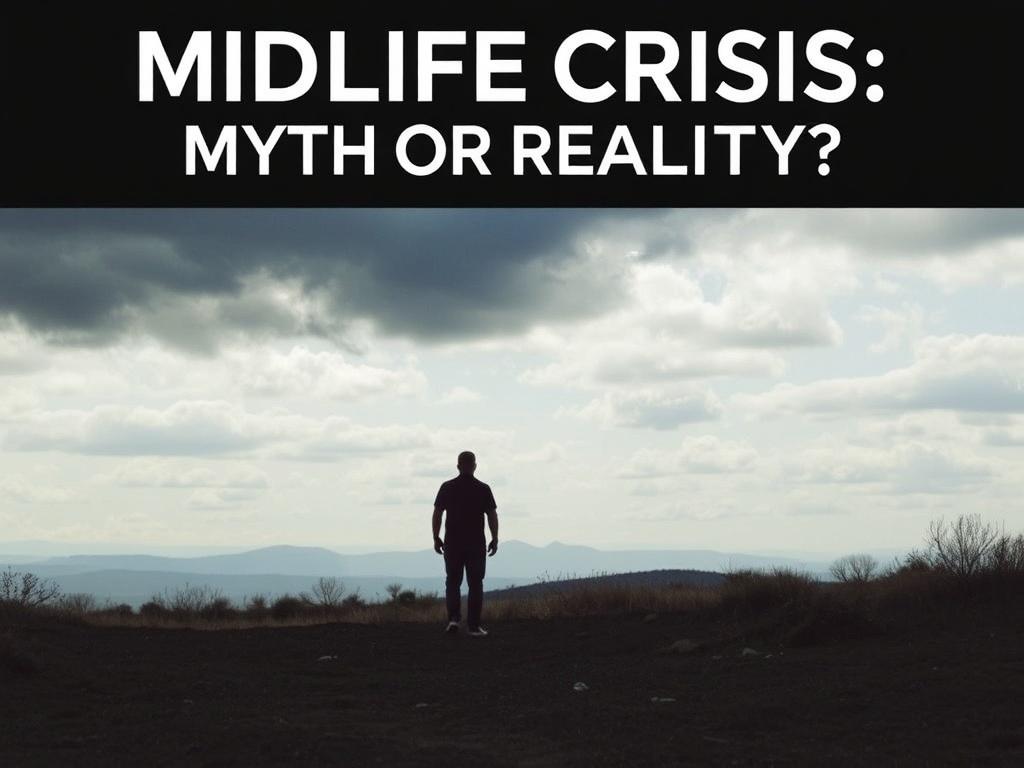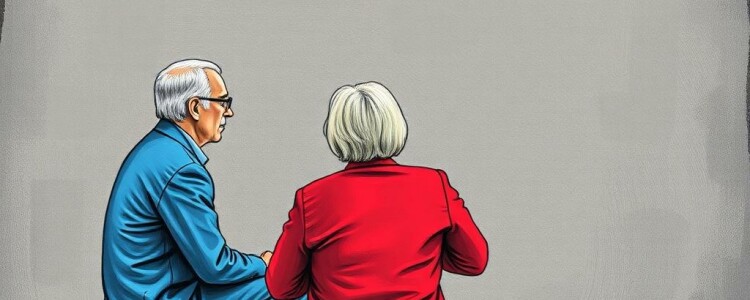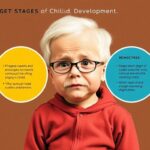Understanding the Concept of Midlife Crisis

The phrase «midlife crisis» often evokes images of a man in his 40s or 50s buying a flashy sports car or quitting his job on a whim, desperate to reclaim some lost youth. But is the midlife crisis a real psychological phenomenon, or is it simply a cultural myth inflated by movies, TV shows, and popular media? To answer this question, it’s essential to unpack what a midlife crisis really means and how it affects both men and women as they navigate the often turbulent years around middle age.
Originally coined by psychologist Elliott Jaques in 1965, the term «midlife crisis» referred to a period of emotional turmoil occurring typically between the ages of 40 and 60. During this phase, individuals may question their accomplishments, feel stuck in routine, confront their mortality, or experience dissatisfaction with their personal and professional lives. The notion has since been popularized, but psychology experts remain divided: is midlife crisis an inevitable developmental stage, or more of an individualized experience shaped by personal circumstances?
What Causes a Midlife Crisis?
To evaluate whether midlife crisis is myth or reality, it’s worth exploring the common causes attributed to this phase. Several factors can trigger the feelings associated with a midlife crisis:
- Self-reflection and Awareness: At midlife, many people assess their life’s path. This can spark existential questions about purpose, meaning, and legacy.
- Physical Changes: Aging brings physical signs such as weight gain, wrinkles, and health concerns that may lead to anxiety or lower self-esteem.
- Major Life Events: Events such as children leaving home (empty nest syndrome), divorce, or career stagnation can serve as catalysts.
- Recognition of Mortality: Realizing that youth is fading and time is limited can motivate dramatic lifestyle reevaluations or changes.
These causes reflect psychological and social dimensions rather than just chronological age, meaning not everyone will experience the same intensity or any crisis at all.
The Role of Culture and Society
Culture plays a huge role in shaping the «midlife crisis» narrative. In Western societies, youth and beauty are highly valued, and aging is often viewed negatively, which can exacerbate anxiety during midlife. On the other hand, in cultures that honor experience and aging, the idea of a midlife crisis may be almost nonexistent or seen in a different light. Therefore, societal expectations and media portrayal can influence how people perceive and experience midlife.
Signs and Symptoms of a Midlife Crisis

Understanding the typical signs can help distinguish a true midlife crisis from common life stresses. Here are some of the most frequently reported symptoms:
| Emotional Symptoms | Behavioral Changes |
|---|---|
| Feelings of sadness, anxiety, or depression | Sudden career changes or quitting a job |
| Frustration with life achievements | Impulsive decisions such as buying expensive or flashy items |
| Desire to seek new adventures or experiences | Changes in wardrobe or appearance to appear younger |
| Increased irritability or mood swings | Strained relationships or sudden break-ups |
While these signs can be dramatic, many individuals experience them in milder ways—or not at all. It’s also important to note that these behaviors can overlap with other life events or psychological disorders.
Men vs. Women: Who Experiences It More?
There is a widespread stereotype that midlife crises affect men more intensely than women, often because men are portrayed as fixating on recapturing youth or overcoming feelings of failure through external symbols like sports cars or affairs. However, research suggests that women also face midlife challenges, though they may express them differently. For example, women might focus more on internal changes, reassessing their roles as caregivers, professionals, or partners.
Both men and women can go through periods of deep questioning during midlife, but societal expectations might influence how openly they express it or seek help.
Scientific Studies: Midlife Crisis Myth or Reality?
Multiple studies have attempted to confirm whether midlife crisis is a universal or common experience. Here’s a snapshot of some key findings:
- A 2016 study published in the journal Psychological Science tracked thousands of participants over decades. It found that emotional well-being tends to follow a U-shaped curve across the lifespan, with a dip in happiness occurring in the mid-40s to early 50s.
- However, the same study suggested that this dip is not necessarily a «crisis» but rather a natural part of aging and development, influenced by life circumstances.
- Research in clinical psychology shows that only a minority of people seek counseling or therapy specifically for midlife crises, indicating it might not be as widespread a problem as media portrays.
- Another study revealed that personality factors like neuroticism and openness to experience can predict who is more likely to experience midlife turmoil.
In sum, science supports the idea that midlife can be a challenging time, but it stops short of labeling it an unavoidable crisis for everyone.
Coping With a Midlife Crisis: Strategies That Work
Whether or not you believe in the midlife crisis, many people do go through difficult times during middle age. Thankfully, there are proven ways to manage these challenges productively:
1. Embrace Self-Reflection
Taking the time to honestly evaluate your true desires, disappointments, and goals can pave the way for growth instead of despair. Journaling, meditation, or therapy are excellent tools for this.
2. Reassess Priorities
Midlife is a perfect time to refocus on what matters most, whether it’s family, health, career, or creativity. This reassessment can provide a new sense of direction and purpose.
3. Adopt Healthy Lifestyle Changes
Regular exercise, balanced nutrition, and sufficient sleep can improve mood and energy levels, making midlife transitions smoother.
4. Seek Social Support
Friends, support groups, and professional counselors provide valuable perspectives and help alleviating feelings of isolation.
5. Set Realistic Goals
Instead of rash decisions sparked by frustration, setting clear, attainable goals allows for incremental and meaningful change.
The Positive Side of Midlife: Opportunity for Growth
It’s important to remember that midlife doesn’t have to be a period defined by crisis or decline. For many, it represents a time of renewed clarity and transformation. Life experience, wisdom, and accumulated skills can combine to create new opportunities and fulfillment. Some people embark on new careers, travel the world, explore creative hobbies, or deepen personal relationships during this stage. Embracing midlife as a chance to reinvent oneself rather than a crisis to avoid can be incredibly empowering.
Examples of Midlife Reinvention
- Starting a new business or pursuing a passion project.
- Going back to school for additional education or training.
- Volunteering or embracing community involvement.
- Focusing on physical wellness through new fitness regimes.
- Traveling or exploring new cultures and experiences.
These examples illustrate that midlife transitions can be a springboard to richer and more authentic living.
Common Misconceptions About Midlife Crisis
Given how popular the term is in media, misunderstandings abound. Let’s clear up some common myths:
| Myth | Reality |
|---|---|
| Midlife crisis only affects men. | Both men and women can experience it, often with different signs and expressions. |
| Everyone experiences a midlife crisis. | Only a minority experience intense crisis; for many, midlife is a time of stability or growth. |
| Midlife crisis happens exactly at age 40 or 50. | It varies greatly depending on individual and cultural context. |
| Midlife crisis must involve dramatic changes like quitting jobs or affairs. | Changes can be subtle, internal, or non-disruptive. |
| A midlife crisis is a mental illness. | It is a developmental phase, not a clinical disorder, though it can be linked to depression or anxiety. |
Dispelling these myths helps us have a more balanced and empathetic understanding of midlife experiences.
How to Support Someone Going Through a Midlife Crisis

If you notice a friend, partner, or family member undergoing behaviors associated with a midlife crisis, your support can be invaluable:
- Listen Without Judgment: Allow space for sharing fears and frustrations openly.
- Encourage Professional Help: Therapy or counseling can offer useful coping strategies.
- Promote Healthy Activities: Invite them to join you in exercise, hobbies, or social outings.
- Be Patient: Understand that midlife transitions may take time and fluctuate in intensity.
- Celebrate Positive Steps: Support their efforts to improve and grow, no matter how small.
Having a strong support network often makes the difference between crisis and evolution.
Final Thoughts: Is Midlife Crisis Real for You?
At the end of the day, whether midlife crisis is a myth or reality depends largely on individual perspective and experience. It’s a useful concept to help describe a period of life when many people re-examine who they are and what they want. But it is not a universal or pathological event. Knowing that midlife can be a time of challenge and opportunity empowers us to approach it with openness and self-compassion.
Conclusion
In conclusion, the midlife crisis is neither purely a myth concocted by popular culture nor an absolute reality experienced by everyone. It is best understood as a complex, multifaceted stage in life where emotional, social, and biological changes come together, sometimes stirring a mix of doubt, reflection, and transformation. For some, this phase can feel like rocky terrain full of upheaval, while for others, it can serve as a springboard for deeper self-awareness and positive change. By recognizing the signs, myth-busting common misconceptions, and embracing practical strategies to cope or support others, individuals can navigate midlife more effectively. This period can ultimately be not just about crisis but about rediscovery, growth, and empowerment. So whether the midlife crisis is a myth or a reality, it certainly offers valuable lessons on the human experience at the crossroads of youth and aging.




















